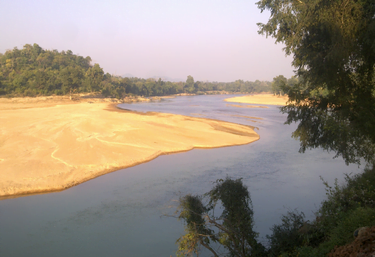South Koel River

South Koel River (Odia: ଦକ୍ଷିଣ କୋଏଲ ନଦୀ; Hindi: दक्षिण कोयल नदी) is a 285 kilometres (177 mi) long river which runs across Jharkhand and Odisha states in India. It originates on the Lawapani Waterfalls, near Lohardaga, Chota Nagpur Plateau a Lawapani Waterfalls, near Lohardaga, Chota Nagpur Plateau 82.5 kilometres (51 mi) from Ranchi, and conjoins the Belsiangar and Singbhum Rivers. The Koel is fed by three streams in Jharkhand, namely the North Karo, South Karo and Koina.[1] The South Koel enters Odisha and joins with Sankh River at Vedavyas near Rourkela from where it is named as Brahmani.[2]
Singhbhum is drained by three river systems – Subarnarekha, Baitarani and Brahmani. The watersheds of these three systems originate near Gamharia in the Kolhan and radiate north-west, south-west and east respectively from their common, centre. These watersheds divide the Subarnarekha and its feeders from the Baitarani and its tributaries, and the latter again from the South Karo and Deo rivers, which feed the Brahmani through the South Koel.
The 1.521 kilometres (1 mi) long Saranda railway tunnel on the South Eastern Railway Howrah – Mumbai Main Line divides the Subarnarekha and Brahmani systems, and at this point the watershed leaves the Kolhan, continuing in a northerly direction through Porahat and finally merging in the Ranchi plateau between the Bicha and Tatkora hills. Of these three great rivers the Subarnarekha alone flows through the district. The Baitarani forms for about 12 kilometres (7 mi) the boundary between the Kolhan area and Keonjhar (in Odisha) while the Brahmani drains the west of the district through its tributary, the South Koel, and its feeders, the North Karo and the South Karo, and the latter of which in its turn is fed by the Deo river.[3]
